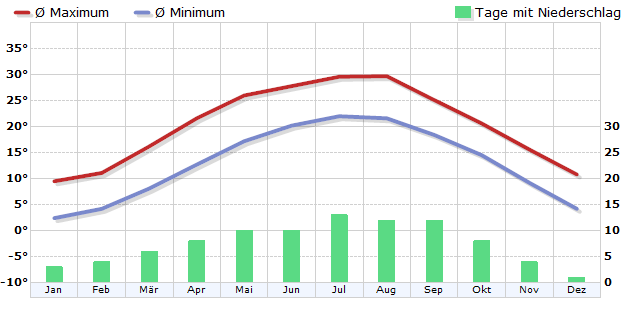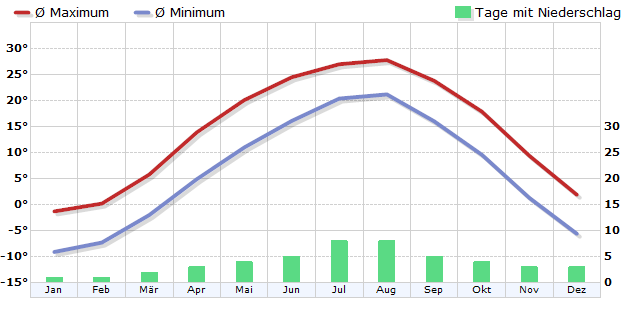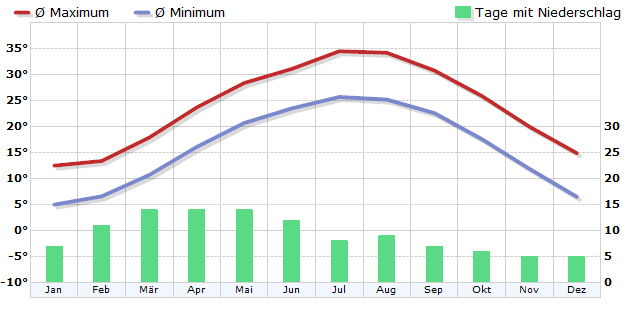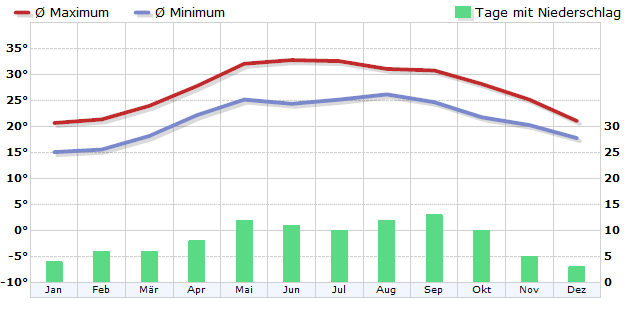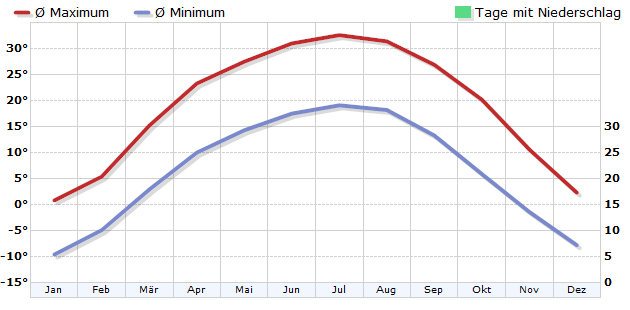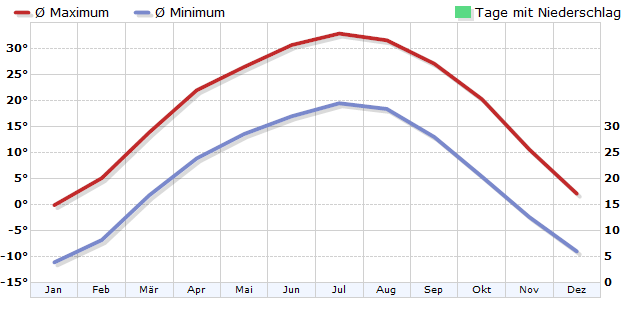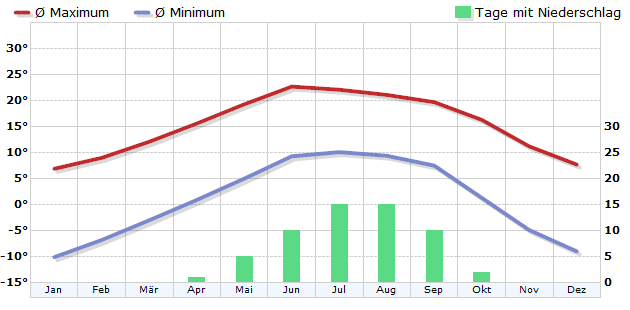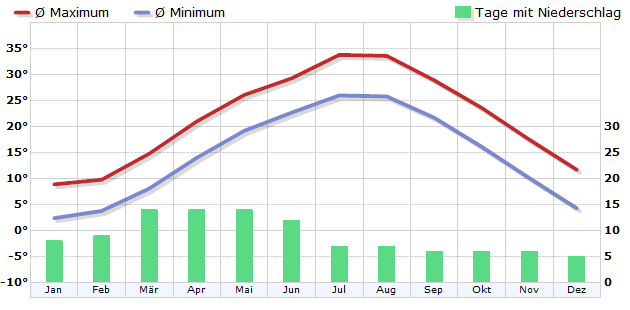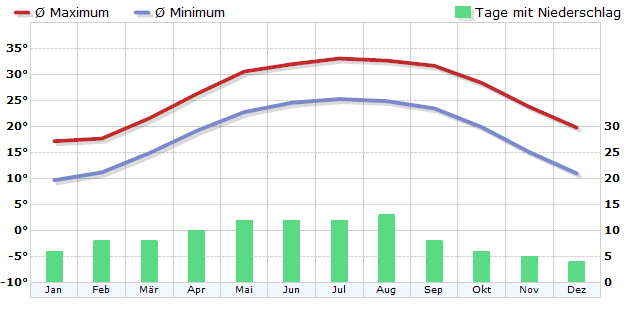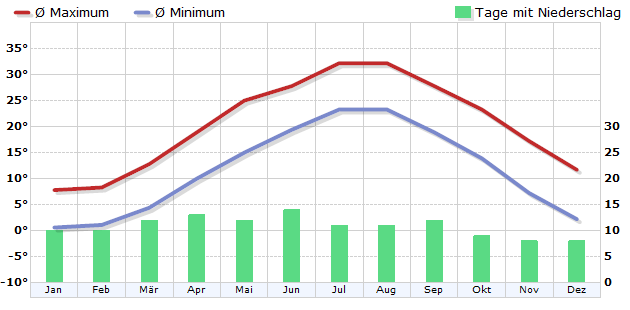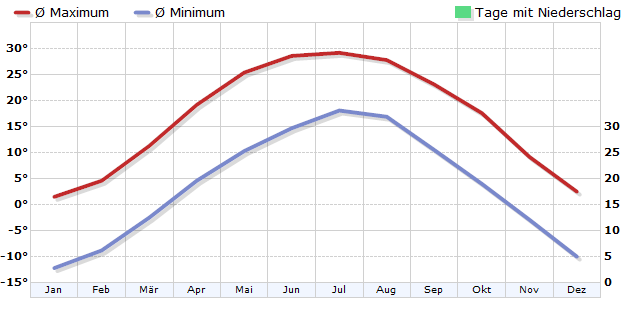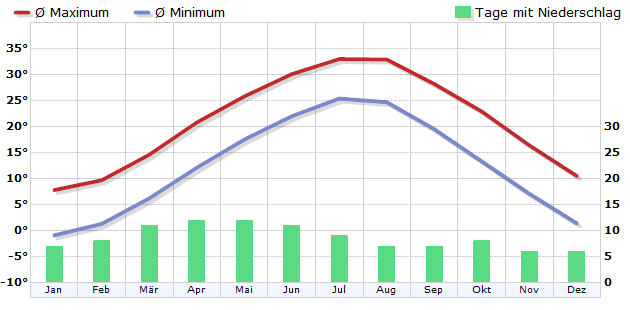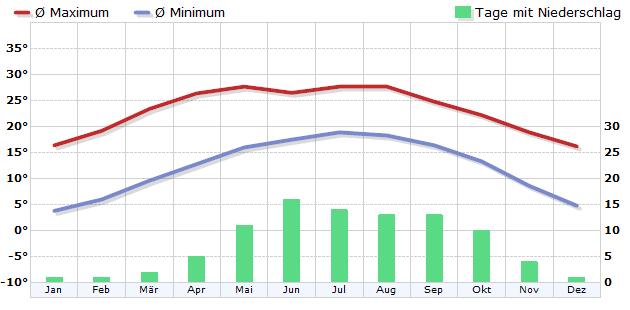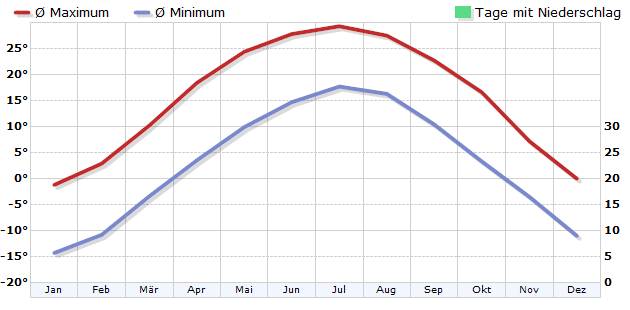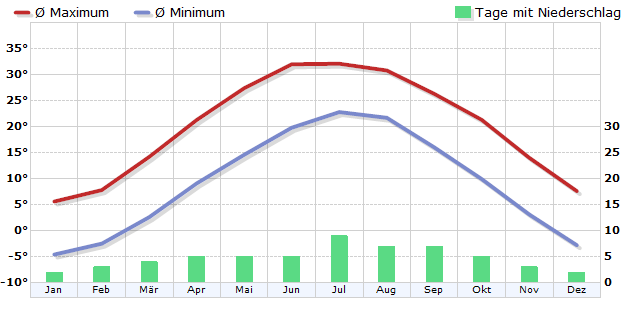Climate China

Due to the large size and geography of the country, China has different climatic conditions. In the northeast there is a continental climate with warm and humid summers, which are influenced by the monsoon. The winters are usually very cold and dry as well as long. From the Taklamakan Desert in western China to Beijing there is a dry desert climate. Summers are hot and characterized by extreme dryness. In the winters it gets very frosty, but there is little snow. In addition, there are large temperature differences between day and night all year round. In the mountains inland there is a harsh mountain climate. The winters are extremely cold, but also extremely sunny. In summer, rain falls from time to time and it only gets moderately warm. In eastern China, between the Yangtze River and Beijing, the climate is temperate and dominated by monsoons. The summers are hot, and the summer monsoon provides with large rain quantities also for sultry air. In winter it is cool, partly frosty and quite dry, snow rarely falls. South of the Yangtze the climate changes into the subtropics, in the very south also into the tropics. In the summers there is tropical heat with heavy rainfall and hardly any cooling at night. The winters are mild to warm and rather dry. If one considers the rainfall distribution within China, it increases from west to east and from north to south. In the deserts and in Tibet, the annual precipitation is only around 100 litres per square metre. In the southeast of China it is the wettest with up to 3000 litres. Most of the precipitation falls in summer.
If you are planning a round trip through China, you should plan this in the months of May and June or September and October. Depending on the region, the summer months are not recommended due to heat, sultriness and rain, and the winter months due to cold.
Destinations
- Beijing (Peking)
- Changchun (Tschangtschun), Jilin
- Chengdu (Tschöngtu), Sichuan
- Chongqing (Tschungking)
- Dairen
- Fuzhou (Futschou), Fujian
- Ganzhou (Kantschou), Jiangxi
- Guangzhou (Kanton), Guangdong
- Haikou / Hainan
- Hailar (Chailar), Inner Mongolia
- Hami (Kumul), Sinkiang
- Hong Kong
- Hotan (Chotien), Xinjiang (Sinkiang)
- Jinan (Tsinan), Shandong
- Kashi (Kaschgar), Xinjiang (Sinkiang)
- Kunming, Yunnan
- Lhasa, Tibet
- Macau (Magao)
- Nanchang, Jiangxi
- Nanjing (Nanking), Jiangsu
- Nanning, Kwangsi
- Qamdo (Tschamdo), Tibet
- Qiqihar (Zizikar), Inner Mongolia
- Quingdao (Tsingtau), Shandong
- Shanghai
- Shenyang, Liaoning
- Taiyuan, Shanxi
- Urumqi (Ürümtschi), Xinjiang (Sinkiang)
- Wuhan, Hubei
- Xian (Hsian), Shaanxi
- Xichang (Hsitschang), Sichuan
- Xining (Hsi'ning), Qinghai
- Yinchuan (Jintschwan), Ningxia
- Yining (Kuldsha), Xinjiang (Sinkiang)
- Zhengzhou (Tschengtschou), Henan


